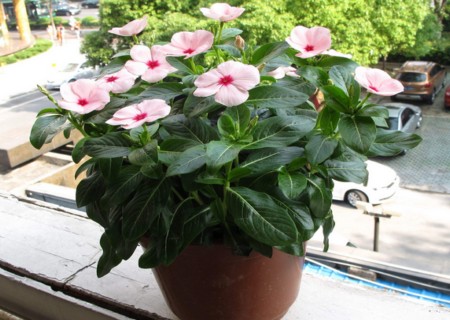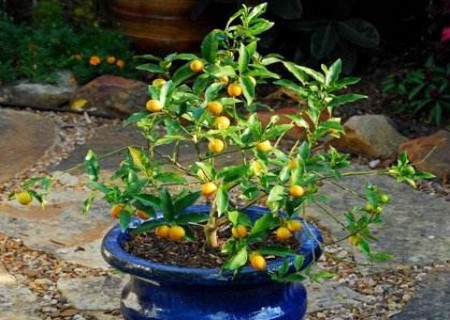How to grow spring flowers in potted plants
Catharanthus roseus is a perennial herbaceous plant with excellent ornamental effect and long flowering period. as long as it is properly maintained and managed, Catharanthus roseus can bloom in four seasons. This flower plant grows well in a fertile, loose and well-drained soil environment. Although this plant is also resistant to barren, but if the soil environment is alkaline, hardening, poor permeability, especially in the clayey soil is prone to poor growth, and the leaves are also easy to yellowing, but also affect flowering.

After we understand the growth habits of Catharanthus roseus, we can take correct measures to plant in pots. So, how to grow potted Catharanthus roseus? Today, the editor will share with you the sowing method of Catharanthus roseus.
The sowing of Catharanthus roseus is generally carried out in spring, and most of them choose to sow from January to April. Sowing should use soft and breathable soil, so in terms of soil allocation, we should follow the principle of loose and breathable.
In the way of sowing, bed sowing or box sowing can be adopted to raise seedlings and propagate. Of course, if we are to sow and propagate in batches, we can also adopt the popular way of raising seedlings with burrowing plates. However, no matter how the seeds are sown, the PH of the medium should be kept between 5.86.2, that is, the cultivated soil should be slightly acidic. As long as the current air temperature and the temperature of the sowing medium are between 22 and 25 ℃, the soil can be sown after disinfection.
If we adopt the method of raising seedlings with a burrow plate, when there are 2-3 pairs of true leaves in the seedlings, they can be transplanted in the pot. When transplanting seedlings, you should choose a bowl with a diameter of about 12 centimeters, and you should put it in place in one step to avoid tedious work in the later stage. If you adopt the method of sowing seedlings, it is recommended that when the seedlings disperse 1-2 pairs of true leaves, they should be transferred to the burrow tray for a period of time, and then transplanted in the basin.
Because Catharanthus roseus is a kind of sun-loving plant, it should be provided with sufficient light conditions to promote photosynthesis and accelerate plant growth in the later stage of seedling management, and sufficient light can also avoid overgrowth. Especially in the case of low temperature in winter, sufficient light is more conducive to plant growth; on the contrary, if the light is not enough, it can cause poor plant growth.
The next thing that needs to be done is temperature regulation, because Catharanthus roseus is easy to show sensitivity to temperature, so it is very important to adjust the temperature in the growing environment. Generally, the plant can grow well at more than 20 degrees Celsius, but it is easy to stop growing when the temperature is less than 15 ℃, and frostbite easily when the temperature is below 5 ℃. Therefore, necessary warm measures should be taken when the winter temperature is too low.
Of course, water and fertilizer management is also a key measure to raise potted Catharanthus roseus. In addition to the normal replenishment of water, it is also necessary to do a good job in summer flood prevention measures; in fertilization, water-soluble fertilizer is generally used, and low concentration is suitable. However, before putting on the basin, it is recommended to put some compound fertilizer as base fertilizer in the basin, and then apply water-soluble dilute liquid fertilizer when nutrients are insufficient. (written by: laughing Book 2017-08-24 21:52)
Time: 2019-06-08 Click:
- Prev

Cutting Propagation method of potted Kumquat
Kumquat, native to southern China, is often planted in potted plants. It begins to bloom in early summer and ripens at the end of autumn. It is a potted fruit tree with flowers and fruits in one. Potted kumquat has high ornamental value, especially in flowering and fruiting stage, so how can this kind of fruit tree propagate in pot?
- Next

How to trim ginseng fig bonsai
Ginseng fig is often planted as a banyan bonsai, its root system is very developed, and the packing is abrupt, the root block shape is strange, more and more people have a special liking for it, love it, it is a beautiful landscape for decorating the home environment! But the beauty of ginseng fig bonsai is not entirely innate
Related
- Fuxing push coffee new agricultural production and marketing class: lack of small-scale processing plants
- Jujube rice field leisure farm deep ploughing Yilan for five years to create a space for organic food and play
- Nongyu Farm-A trial of organic papaya for brave women with advanced technology
- Four points for attention in the prevention and control of diseases and insect pests of edible fungi
- How to add nutrient solution to Edible Fungi
- Is there any good way to control edible fungus mites?
- Open Inoculation Technology of Edible Fungi
- Is there any clever way to use fertilizer for edible fungus in winter?
- What agents are used to kill the pathogens of edible fungi in the mushroom shed?
- Rapid drying of Edible Fungi

